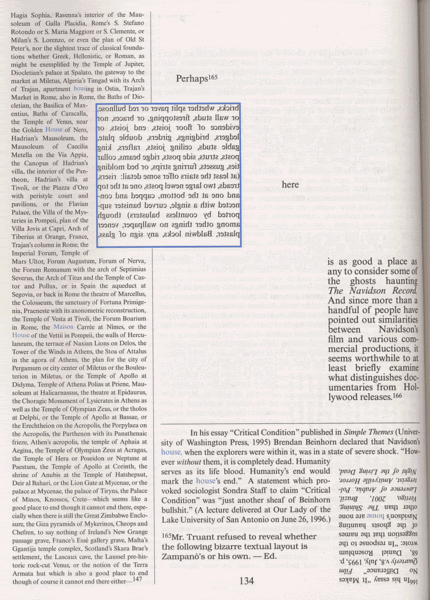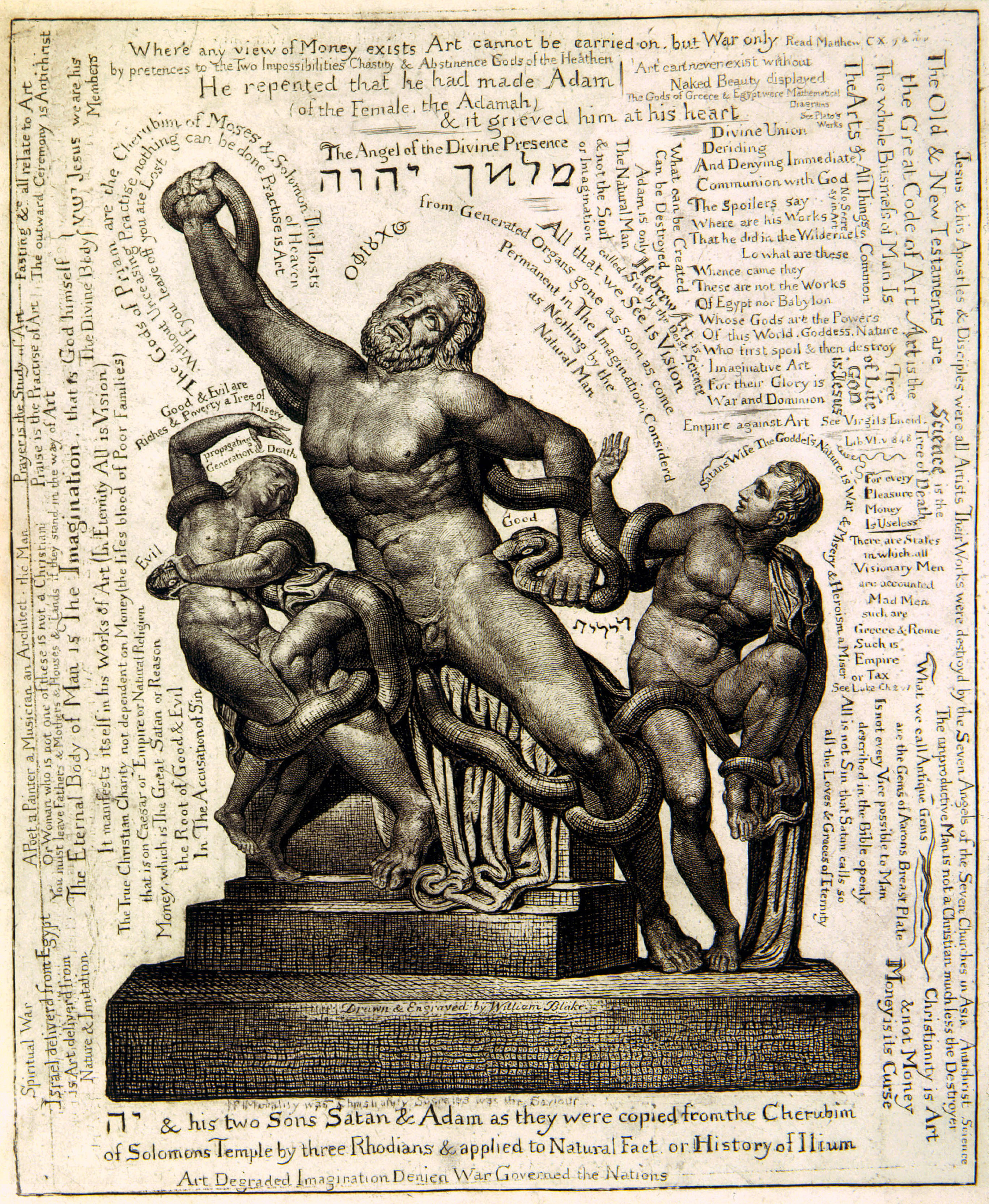Navigating the “Technotext”: _Between Page and Screen_
Author Amaranth Borsuk and computer programmer Brad Bouse have collaborated to create Between Page and Screen, a new kind of reading experience that requires both a physical book and a computer (with a webcam). The husband and wife team envisioned a creative project that would harness new and old technologies to give readers a revolutionary way to engage with a text. The abstract black shapes on the book’s pages are “activated” by a webcam, revealing the encoded narrative (which itself takes the form of letters between the characters P and S).
This also means that, in order to read the story, the reader has to continuously see him/herself in the webcam. The relationship between text and reader is playfully highlighted as the reflected reader figures out the interface (you have to hold the book upside-down to avoid mirror writing) and moves through the narrative.
Navigating the multiple mediations that exist between a reader and a story can sometimes be akin to working through a mystery via a set of incomplete clues. Reading can feel very much like a process of unlocking. Think about reading a book that beings in media res. As a reader, you’re responsible for becoming familiar, as quickly as possible, with the world a writer has created. More experimental novels, like Mark Z. Danielwski’s House of Leaves, set an even higher bar, beckoning readers to follow along through non-linear narratives, nested stories, frustratingly excessive footnotes, and non-traditional layouts.
At one level, experimentation in writing is nothing new. Lawrence Sterne’s sprawling metafictional Tristram Shandy (completed in 1767) is considered a forerunner for the use of visual writing, and Blake himself was quite the experimenter, expecting a great deal from his readers by creating works that not only combined text and image, but were also based in his own self-contained mythology. Some works, like An Island in the Moon, were elaborate inside jokes. Laocoön and The Four Zoas necessitate the reader’s continual re-engagement with the physical page itself as the text twists and winds outside the borders of typical English left-to-right writing.
However, requiring both a physical book and a computer seems to be a new step. So how does it change things? In an interview with Imprint, the authors of Between Page and Screen noted that
there’s some truth in [the claim that the hallmarks of engaging writing remain largely unchanged despite technological shifts]. But I do believe that the experience of reading a story changes with the medium through which we receive it. “Between Page and Screen” wouldn’t be or do exactly the same thing if the poems were printed in a book. Primacy would be given to the page.
A similar thing could be said about Blake’s Illuminated works. In an age when people bemoan the death of traditional publishing and reading, works like Borsuk and Bouse’s (and Danielwski’s, Sterne’s, and Blake’s) remind us that reading is always changing — and change is good. It’s exciting to think about what other collaborations between writers and programmers could produce.
Read Imprint’s article and interview with the authors (reprinted on Salon.com) here, and order your copy of Between Page and Screen at sigliopress.com (use coupon code “SPINTO” for a 20% off discount!). Limited copies are available on this initial print run. I just ordered my copy, and I’ll update on what I find out!
Continue reading


